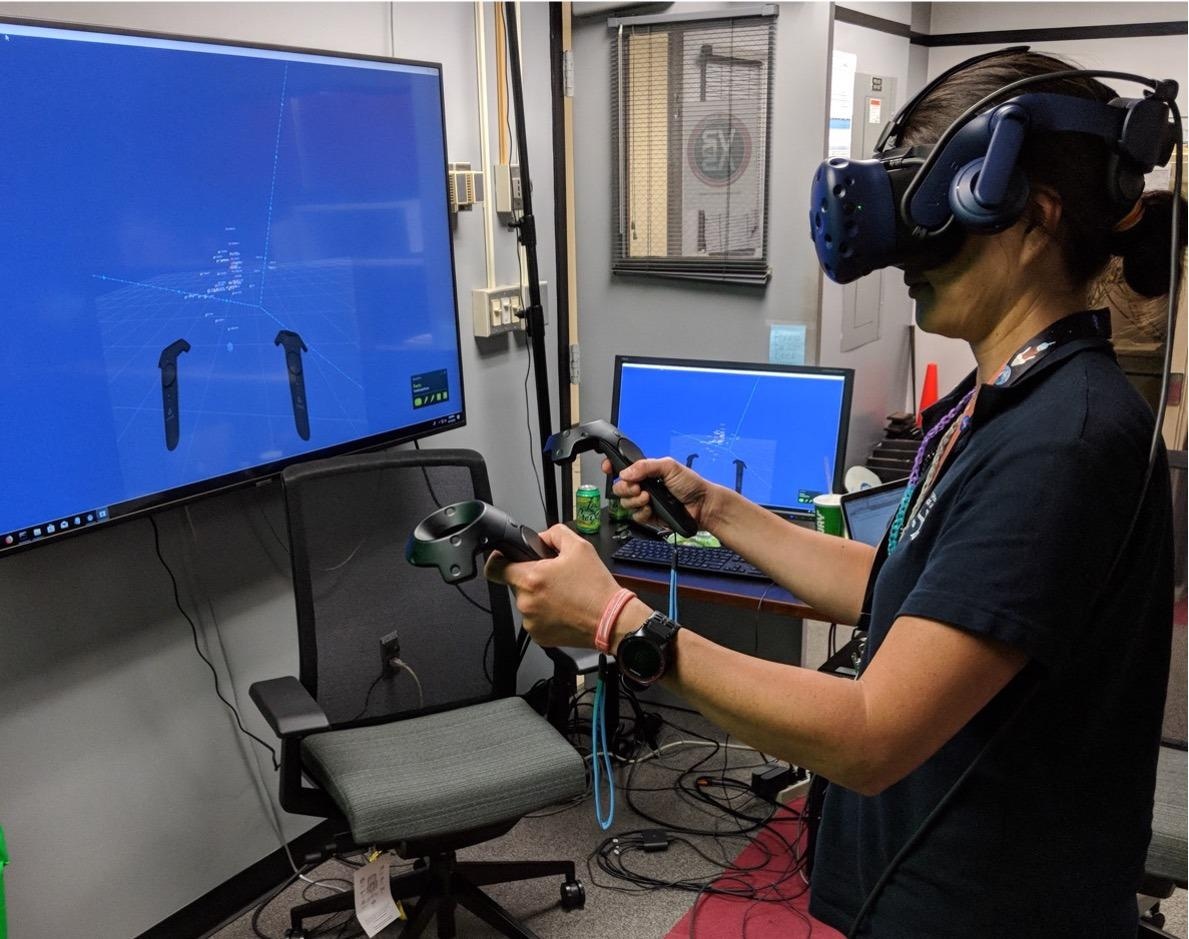Young stars are surrounded by swirling disks of gas and dust, the material that might one day create planets. Citizen scientists — volunteers from the general public — interact with professional scientists to help look for dusty disks surrounding nearby stars, offering clues about the early lives of stars and the elements of planets, as part of NASA’s Disk Detective program.
 Susan Higashio uses a virtual reality program called PointsCloudVR to look at stars with disks. Image Credits: NASA/Matthew Brandt.
Susan Higashio uses a virtual reality program called PointsCloudVR to look at stars with disks. Image Credits: NASA/Matthew Brandt.
Citizen scientists have found almost 40,000 disk candidates since the initiative began in 2014, utilizing data from NASA’s Wide-field Infrared Survey Explorer, or WISE, mission, which is now known as NEOWISE, as well as other studies. Researchers wanted to know how old these disks were now that they had so many instances of probable disks.
To answer this perplexing topic, scientists looked to virtual reality (VR). Specifically for Disk Detective, a team led by Thomas Grubb at NASA’s Goddard Space Flight Center in Greenbelt, Maryland, built customized VR software called PointCloudsVR to enable scientists to look at the galaxy in a whole new way.
On Tuesday, June 14th, 2022, during the American Astronomical Society’s summer conference in Pasadena, California, researchers presented their first VR-enabled discoveries, including the ages of ten stars with disks.
Young stars like the ones we study often form in groups—and when we view our data in VR it enables us to see things from a new perspective. It can be easier to spot these groups.
Susan Higashio, Study Lead Author and Visiting Researcher, Disk Detective Program, NASA
Recent research was published in the Astrophysical Journal by the Disk Detective team. Higashio worked on this project as a visiting researcher at Goddard and now works in the aerospace sector.
Higashio traveled through the Milky Way wearing a virtual reality headset. Each star in the virtual environment is a labeled dot encoded with location and velocity data from the Gaia mission of the European Space Agency (ESA). The program, created by Goddard engineer Matthew Brandt, models stars moving in 3D over time, like a thick cloud spreading out into a chaotic sea of data.
Higashio examined the 40,000 stars with disks discovered by citizen scientists to determine if any of them traveled with groupings of stars known as young stellar associations, which circle the galaxy in teams. This is significant because stars that travel in the same direction most likely originated at the same time, as a result of the same cosmic process.
Higashio and colleagues discovered ten of the citizen-science star discoveries in young stellar associations in their current study. Researchers were able to establish the ages of each dusty disk star, which ranged from 18 to 133 million years old.
Now we can place them in a time sequence, and they become part of the story of how disks form and evolve and how planets form and evolve.
Marc Kuchner, Study Co-Author, Citizen Science Officer, NASA
Marc Kuchner is also a Goddard astrophysicist.
One of these disk-shaped stars has turned out to be an outlier — astronomers refer to it as an extreme debris disk. That is because it appears to contain an excessive amount of dust for its 45 million-year age. Much more dust should have spiraled into the star or blasted out into space by that time.
The researchers also discovered a young stellar association that has never been noted before. This group is dubbed “Smethells 165” by Higashio’s team after the brightest star, which was cataloged by astronomer William George Smethells. All of the stars in the cluster are tiny, feeble red dwarfs.
The Disk Detective project is still on the lookout for more disks.
We are all part of a great team that works to make new discoveries in astronomy.
Lisa Stiller, Citizen Scientist, Disk Detective Program, NASA
Anyone may contribute to the search for additional dusty disk stars.
Journal Reference:
Higashio, S., et al. (2022) Disks in Nearby Young Stellar Associations Found Via Virtual Reality. American Astronomical Society Journal. doi.org/10.48550/arXiv.2205.09133.